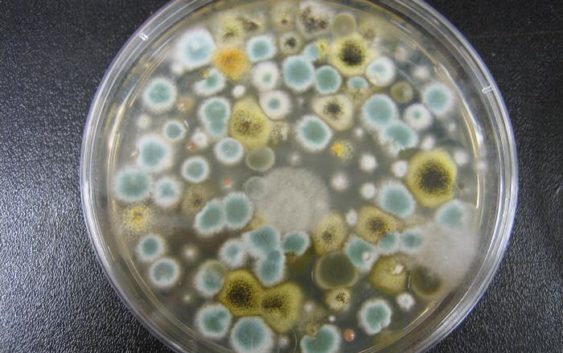- Artists transform hurricane aftermath into hoop-inspired masterpieces at Charlotte exhibit
- NC's cost for Hurricane Helene damage is nearly $60 billion, state says
- State to develop drone program to better respond to disasters like Helene, Florence
- South Carolina residents face deadline to get storm debris out to the curb after Hurricane Helene
- SCDOT to pick up Hurricane Helene debris for a final day in South Carolina
Houston-area hospitals see slight increase in patients treated for mold infection post-Hurricane Harvey

Mold has been steadily building up around the Houston area ever since Hurricane Harvey flooded the city in 2017. Researchers at four area hospitals concluded that roughly 2.4 out of 10,000 of its patients before the storm were being treated for invasive mold infections (IMI). After Hurricane Harvey, that number jumped up to 3.39 out of 10,000.
While that’s not a sizeable increase, health experts say it’s one they expected.
“Anytime you have a flood, like we did with Harvey, you’re gonna get mold overgrowth in flooded houses,” says Dr. Linda Yancy, Infectious Disease Specialist, Memorial Hermann Hospital. “That’s just what mold does. It takes moisture and it multiplies. And as mold grows, it releases spores. And so you have this increase in the exposure of the general public to mold spores.”
According to the United States Environmental Protection Agency, some mold have spores that are easily disturbed, and are easily present in both indoor and outdoor air. Other mold have sticky spores, that cling to surfaces, and are actually able to grow for years at a time.
This is what appears to have occurred in Houston, as a result of Hurricane Harvey. Yancy says the good news is that the risk level from a mold infection varies by the individual, but it’s generally not a serious problem for healthy people.
“Most infections are much more frequently seen in folks that are getting compromised in some way. Either they have a cancer or they’re on anti-rejection meds for a transplant, or they’re on steroids for an autoimmune disease. Those are the people who are much more at risk,” says Yancy.
This is why hospitals continue to take specific actions to protect their patients. Anytime Memorial Hermann does any kind of construction, Yancy says they have to set up a special airflow to make sure that all the air in the area under construction is vented to the outside.
“We are already aware of the risks,” Yancy says.
“We actually have negative pressure machines that we bring in anytime we’re doing construction,” she said.
The research showed that roughly 45 percent of all invasive mold infection patients end up needing intensive care, and about 24 percent ended up dying.